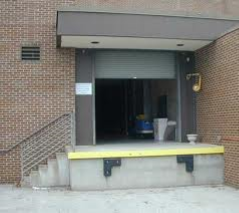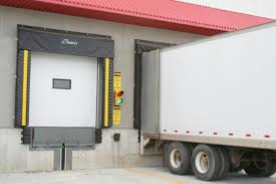Traditional open-style loading docks should always be a concern for safety managers since there is nothing to prevent a forklift from driving off the edge of the dock. Pedestrians have also been injured falling off loading  docks.
docks.
OSHA requirements don’t provide much guidance. Loading docks must have guardrails only if they are four feet or more above ground level, but most loading docks are 48” to 52”. How often have you seen guardrails on docks? Not often.
In addition, forklifts must “maintain a safe distance” from the edge of the dock. This means that it is up to the employer to determine that distance and ensure that drivers maintain this distance.
So what are some best practices to consider for open-style loading docks?
- Add physical barriers to prevent forklifts and pedestrians from falling off the edge. There are many options; but consider adding standard handrails with a gate that opens for truck loading.
- Restrict pedestrian access to the dock via training, signage, and barriers. Never allow an employee to stand between a trailer and the dock.
- Provide safe access to the dock for forklifts. This might include adding a ramp with side rails.
Make sure you have sufficient lighting. - Keep dock clean and store minimal amount of material on the dock.
- Beware of wet/icy docks; use de-icer if needed.
- Paint the edge of the dock to improve visibility.
- Add dock bumpers.
Fortunately the style of loading docks has changed. Many companies who ship extensively by trucks have installed individual bay doors, bumper locking devices, light systems, etc. which has greatly improved dock safety.
individual bay doors, bumper locking devices, light systems, etc. which has greatly improved dock safety.
As a final reminder please chock the trailer wheels and inspect the trailer before loading.
If you would like to share your experiences/photos of forklift incidents that can educate others on the principles of safe forklift operation please send them to: bhulberg@D2000safety.com
We will not publish company or individuals names.
Newsletters may or may not open automatically, depending on the web browser settings you are using.